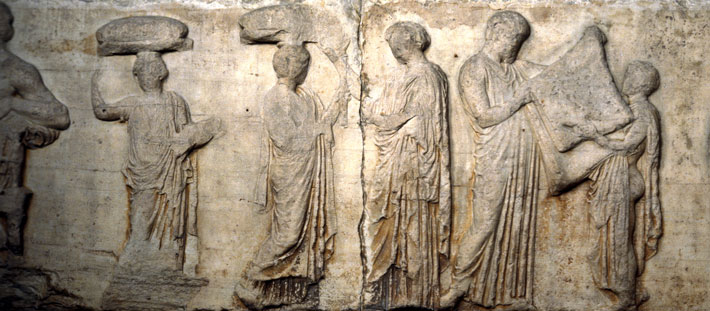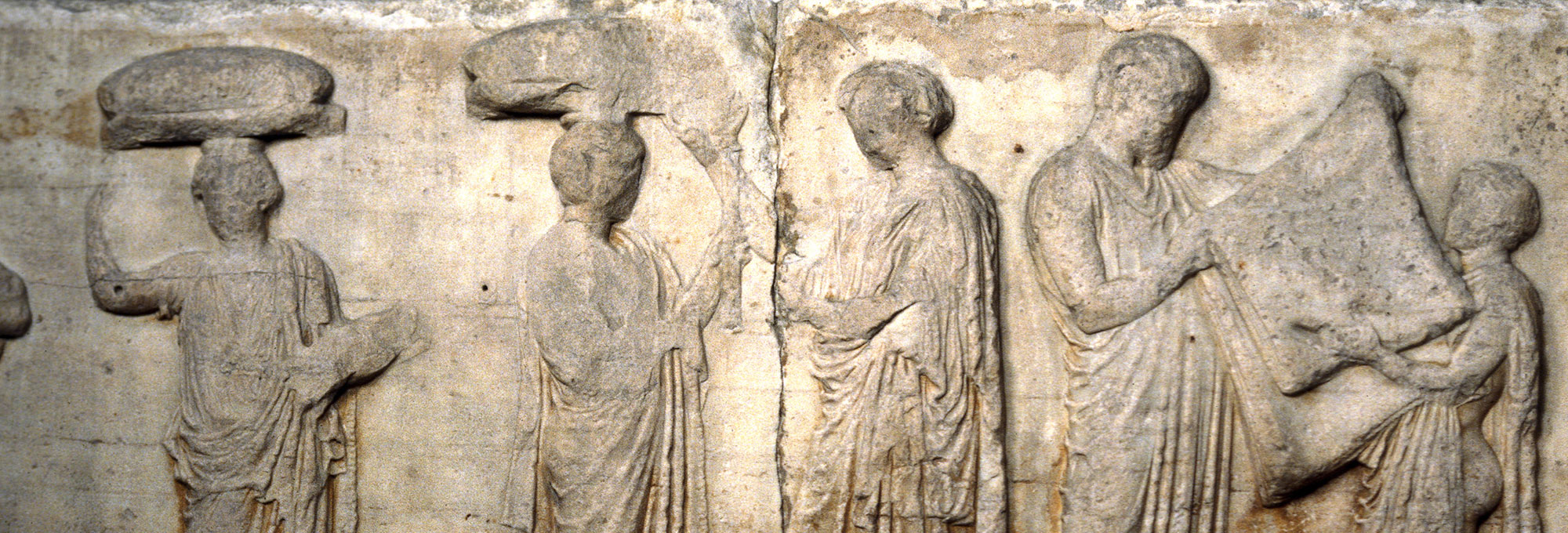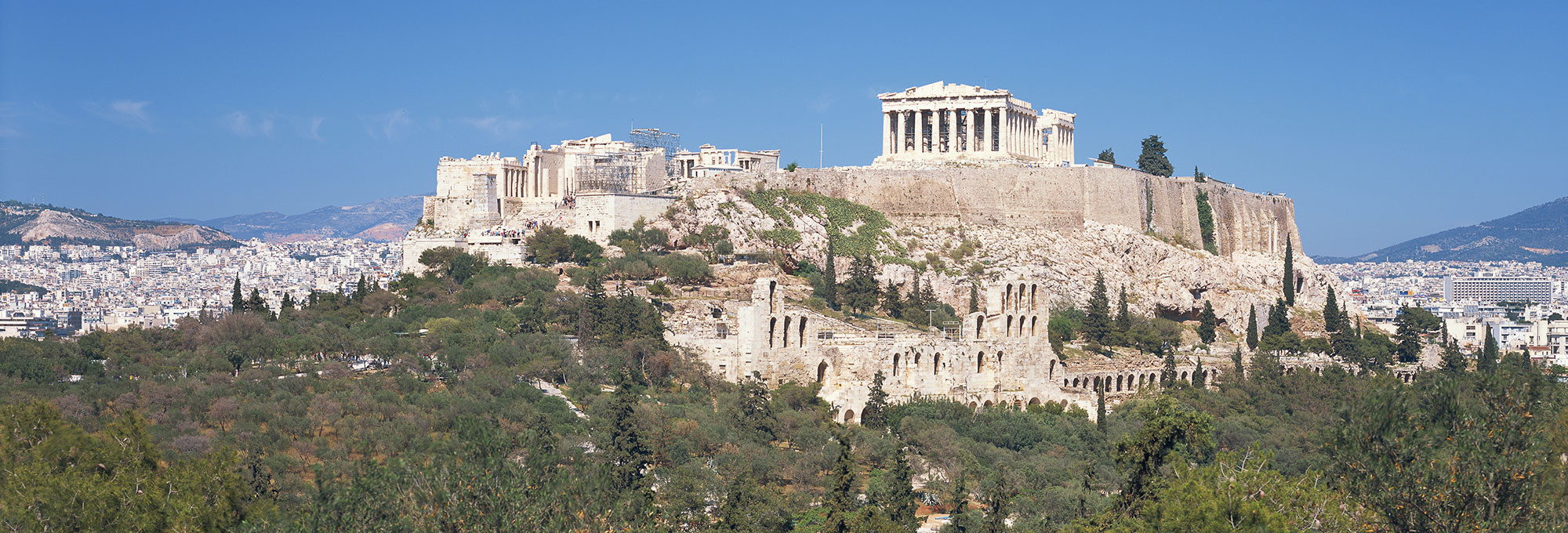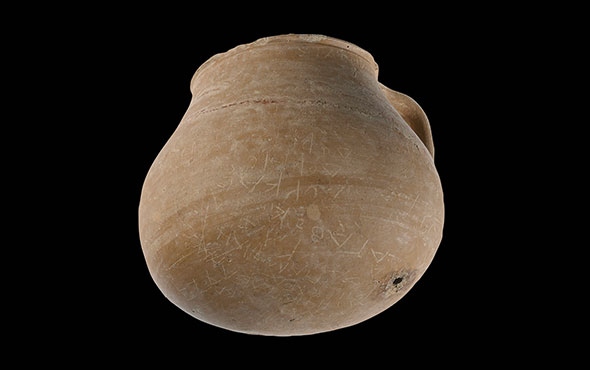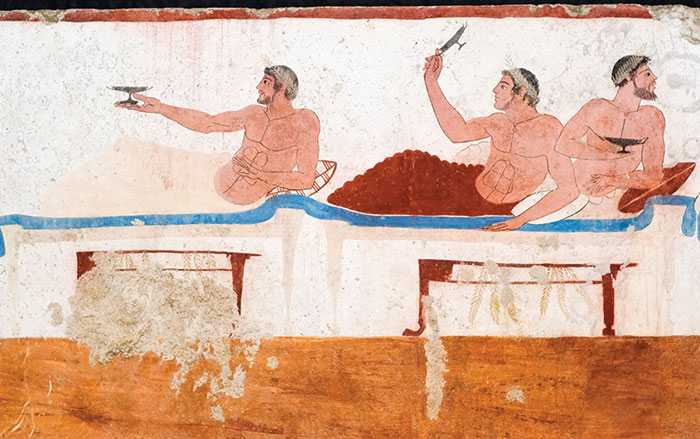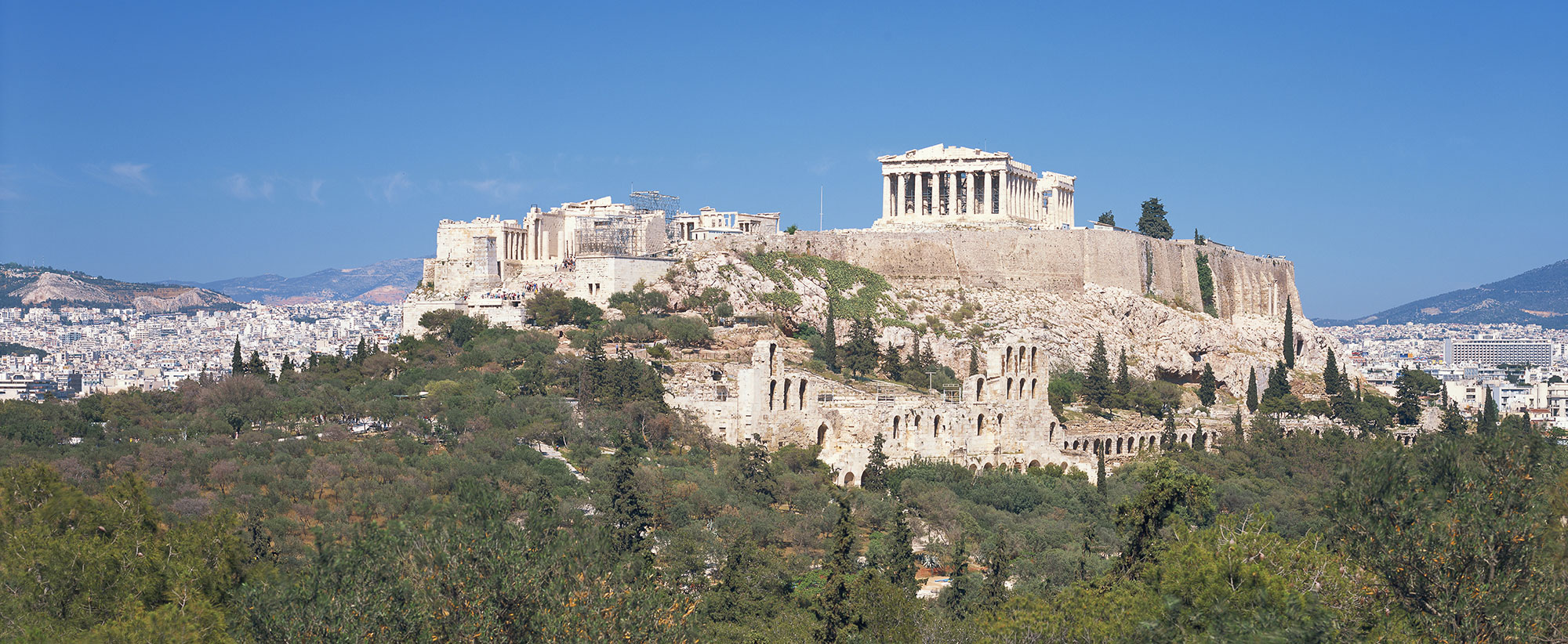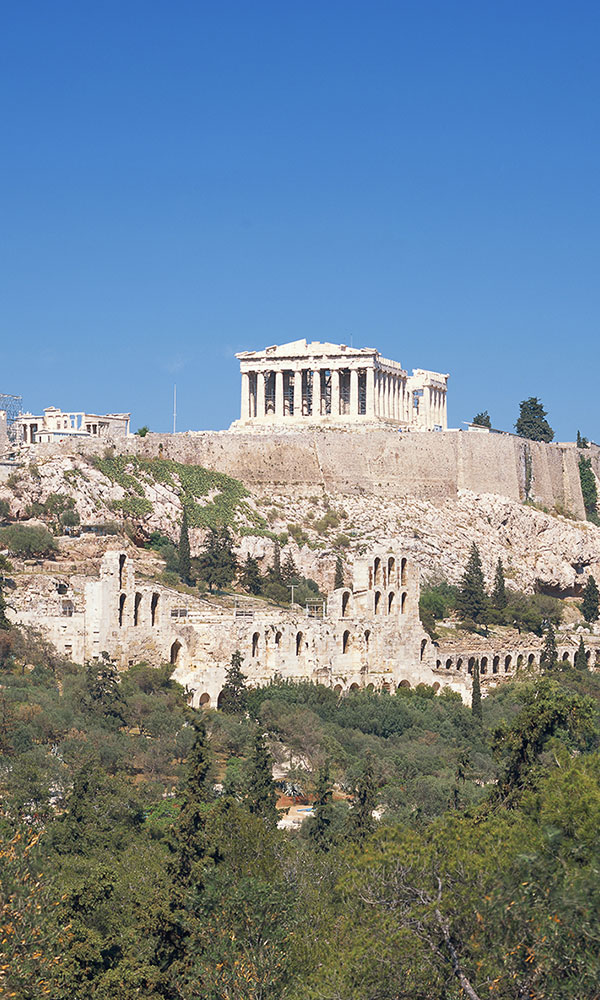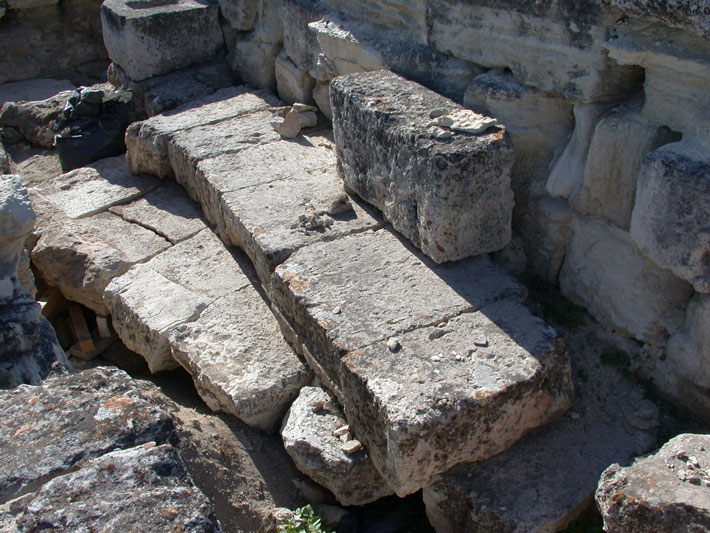
Against the Acropolis’ north fortification wall sits a small, square building that Wilhelm Dörpfeld identified in the 1920s as the Arrephorion. (Dörpfeld was the German archaeologist and architect who pioneered the techniques of stratigraphic archaeology and was Heinrich Schliemann’s successor at Troy.) The Arrephorion was the home of the Arrephoroi, two aristocratic girls between the ages of 7 and 11, who were chosen each year to serve in the cult of the goddess Athena. During the festival of the Arrephoria, celebrated at night in mid-summer, the girls enacted a secret ritual in which they carried chests above their heads—the contents were and still remain a mystery—and descended the Acropolis, likely by means of a stairway concealed inside the north wall.
While it is known that the Arrephorion, constructed in the fifth century B.C., once had a square hall and four-column colonnade, as well as a rectangular courtyard, all that survive are limestone foundation blocks and fragments of marble. Because the limestone is fragile and the marble cannot be used to restore any extant structure, it was decided that, in contrast to the plans for any other monument on the Acropolis, the Arrephorion would be reburied to protect it. The structure was backfilled in 2006 with soil that could easily be removed if necessary, but is also intended to remain in place for at least 120 years with minimal changes resulting from moisture, seismic activity, or pressure applied to it by contact with the circuit walls.
